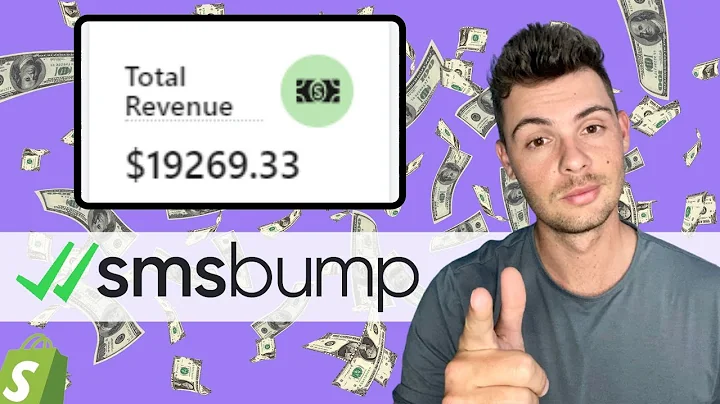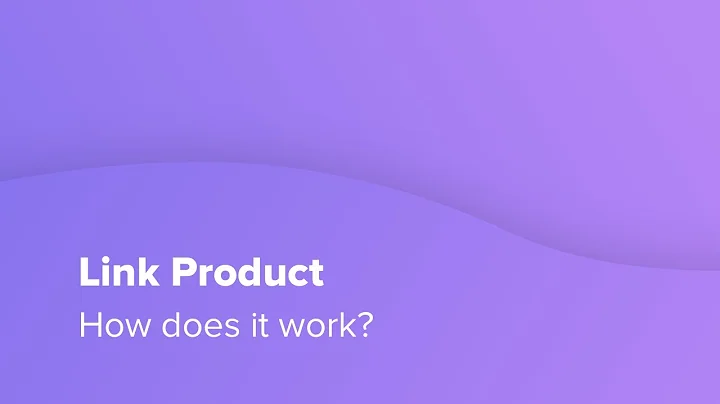Boost Email Open Rates by 110% with Segmentation
Table of Contents:
- Introduction
- The Impact of Segmentation
- Open Rates
- Click Rates
- Conversion Rates
- Importance of Segmentation During the First Weeks
- Understanding Sender's Reputation
- The Role of Engagement Rates
- Pre-Built Essential Segments
- Active Email Subscribers Segment
- Most Engaged Email Subscribers Segment
- Inactive Email Subscribers Segment
- Creating Segments Manually for Ecommerce Targeting
- Segment of Recent Buyers
- Segment of Loyal Customers
- Effective Usage of Segments in Email Campaigns
- Importance of Engagement Rates
- Implementing a Gradual Email Sending Approach
The Power of Email Segmentation for Higher Conversion Rates
In today's highly competitive digital landscape, finding effective ways to cut through the noise and reach your target audience is paramount. One often overlooked but incredibly powerful method is email segmentation. By dividing your email list into specific segments based on customer data, you can significantly boost open rates, click rates, and overall conversion rates. In this article, we will explore the importance of segmentation and how to leverage its benefits to drive better engagement and improve your sender's reputation.
The Impact of Segmentation
Segmentation plays a crucial role in enhancing the performance of your email campaigns. Let's take a closer look at how it impacts the key metrics that determine the success of your email marketing efforts.
Open Rates
Segmentation enables you to send highly targeted and personalized emails, increasing the chances of recipients opening your emails. According to real customer data, using segmentation can result in a staggering 110% increase in email campaign open rates.
Click Rates
By tailoring your email content to specific segments of your audience, you can provide more relevant and engaging information. This leads to a 52% increase in click rates, as recipients are more likely to click on links or CTAs that resonate with their interests and needs.
Conversion Rates
Ultimately, the goal of any email marketing campaign is to drive conversions. Through segmentation, you can send highly customized offers and recommendations to each segment, resulting in an average 62% increase in conversion rates compared to non-segmented campaigns.
Importance of Segmentation During the First Weeks
The first few weeks of sending emails are crucial for establishing your sender's reputation. Email inbox services like Gmail track the engagement rates of your campaigns during this period, determining how well your emails will perform in terms of deliverability and inbox placement. Therefore, it is crucial to leverage segmentation right from the start to achieve better engagement rates.
Understanding Sender's Reputation
Your sender's reputation is determined by various factors, including engagement rates, spam complaints, and bounce rates. However, during the first couple of weeks, engagement rates hold the most weight. By using segmentation, you can improve these rates and establish a solid sender's reputation, resulting in better deliverability and inbox placement for all your future emails.
Pre-Built Essential Segments
To make the segmentation process easier for you, we have pre-built some of the most essential segments. These segments are tailored to specific purposes and can be created in your account with just one click.
Active Email Subscribers Segment
The active email subscribers segment is commonly used for newsletters. It includes contacts who are subscribed to your email channel and have either opened at least one email campaign within the last 90 days or opted into the email channel within the last 30 days. This segment is perfect for sending regular updates and information to your engaged subscribers.
Most Engaged Email Subscribers Segment
If you want to target the most engaged contacts in your email list, the most engaged email subscribers segment is ideal. This segment consists of contacts who have shown high levels of engagement with your messages. By targeting this segment, you can increase the effectiveness of your campaigns, especially in the initial days of sending.
Inactive Email Subscribers Segment
Keeping your contact list clean and healthy is crucial for maintaining a good sender's reputation. The inactive email subscribers segment helps you identify contacts who haven't engaged with your emails for an extended period. By regularly opening this segment and unsubscribing inactive contacts, you can protect your sender's reputation and save money in the long run.
Creating Segments Manually for Ecommerce Targeting
While the pre-built segments cover the basics, you can create additional segments manually to achieve more powerful targeting, especially for ecommerce businesses.
Segment of Recent Buyers
Start by creating a segment of recent buyers who are subscribed to your email channel. This segment includes customers who have placed an order within the last 30, 60, or 90 days. Recent buyers are highly receptive to your marketing efforts and will appreciate recommendations and discounts for their future orders.
Segment of Loyal Customers
To target your most loyal customers, create a segment based on the number of orders placed or the total amount spent. This segment includes customers who have made multiple purchases or have spent a significant amount in your store. By treating these customers with personalized discounts, sneak peeks, and VIP newsletters, you can strengthen their loyalty and encourage repeat purchases.
Effective Usage of Segments in Email Campaigns
To leverage the power of segmentation in your email campaigns, you need to select the appropriate segments for each campaign. For example, when sending a VIP newsletter, make sure to select your VIP list as the target audience. Gradually expand your target audience by adding in the most engaged subscribers, recent buyers, and finally, the rest of your active contacts. This gradual approach helps ensure successful sending and better engagement rates right from the start.
Importance of Engagement Rates
Throughout your email marketing journey, engagement rates will continue to play a vital role in the success of your campaigns. By consistently monitoring and improving these rates, you can boost the effectiveness of your emails and maintain a strong sender's reputation. Encourage recipients to actively interact with your emails, such as by clicking on links or replying with feedback. This will lead to higher engagement and ultimately better conversion rates.
Implementing a Gradual Email Sending Approach
Instead of bombarding your entire audience with emails every day, it is essential to adopt a gradual email sending approach. Start by targeting a narrower audience, such as your VIP list. As your campaigns progress, gradually add in the most engaged subscribers, recent buyers, and other active contacts. This strategy allows you to maintain a high level of engagement and deliverability while expanding your reach over time.
In conclusion, email segmentation is a powerful tool that can significantly enhance the performance of your campaigns. By dividing your email list into targeted segments, you can deliver more personalized and relevant content, leading to higher open rates, click rates, and conversion rates. Remember to continuously monitor engagement rates, create pre-built and manual segments that suit your business, and adopt a gradual sending approach to ensure sustainable success in your email marketing efforts.






















